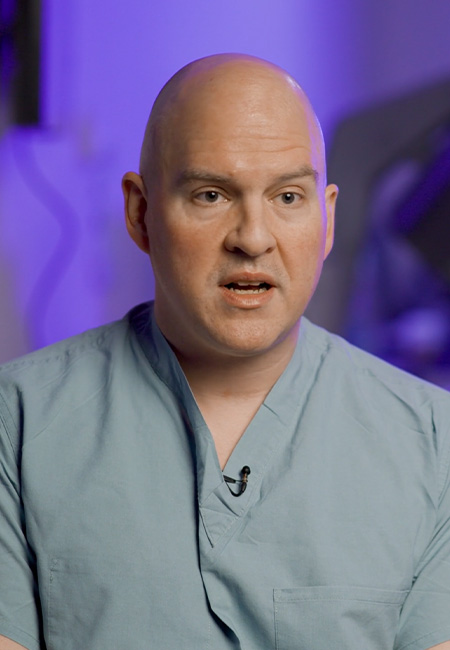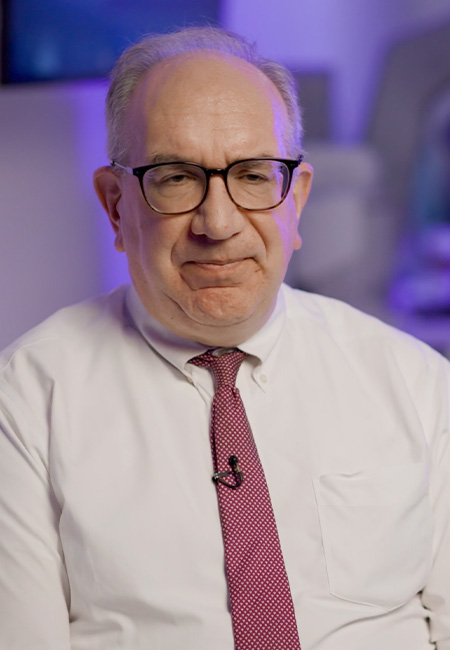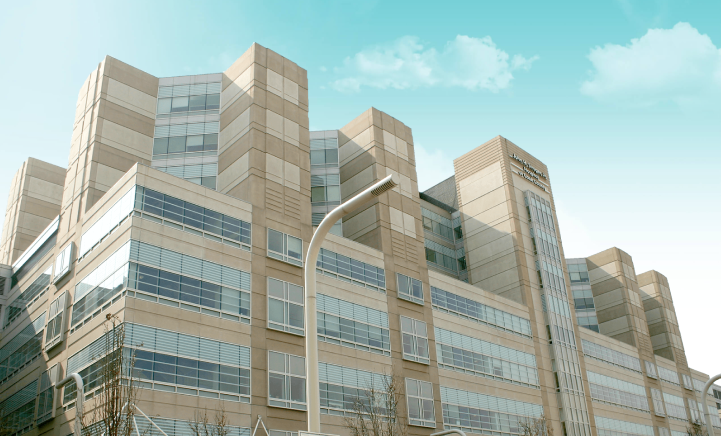“Robotic surgery is an investment in our system, but more importantly it’s an investment in our patients and the care they can receive.”
Eric Mikaitis, lekarz medycyny
Interim CEO
What is robotic-assisted surgery?
Robotic-assisted surgery is a method to perform minimally-invasive surgery using thin robotic instruments inserted through your abdominal or chest wall. It is referred to as “robotic-assisted surgery” as your surgeon is always controlling the instruments and the robot.

“Minimally-invasive surgery is less overall stress for the patient. It results in less wound complications and problems, and it results in a quicker return to daily activities since there are not large incisions that need to heal.”
Alexander Sauper, MD FACS
Chair, Division of Surgical Critical Care
Chair, Robotics Steering Committee
What is better about robotic-assisted surgery?
Robotic-assisted surgery allows surgeons to perform many different complex procedures, some of which would only be possible using a traditional surgery approach which means larger incisions, longer recovery times, and more potential for wound and other complications.
Even when robotic-assisted surgery is compared to “laparoscopic” minimally-invasive surgery using small instruments controlled by the surgeon at the bedside, robotic-assisted surgery has many more advanced instruments, better technical capabilities, and superior camera visualization which makes those operations safer and more precise than could otherwise be done using a laparoscopic minimally-invasive approach. There is also a higher success rate of completing your operation minimally invasively using a robotic-assisted approach when you have a more difficult operation needed.
benefits may include:
Less pain
Shorter overall recovery time
Less time spent in the hospital or even allow you to go home the same day as your procedure
Less blood loss and a lower risk of need for blood transfusions
Less scarring
Fewer complications after the procedure such as wound infections
Cook County Health uses the Intuitive Surgical da Vinci® surgical system to perform robotic-assisted surgery. The da Vinci® surgical system has four robotic arms that hold instruments, a camera, and a magnifying screen.

“Robotic surgery puts us on an even par with any other medical center, in terms of offering the latest and greatest technology with comparable results.”
Richard R. Keen, lekarz medycyny
Chief of Surgery
What kind of surgeries can be performed with robotic surgery?
Cook County Health will use the da Vinci® surgical system to perform the following procedures or treat the following conditions:
- Abdominal wall hernia repair
- Inguinal hernia repair
- Appendix removal
- Gallbladder removal
- Stomach ulcers and cancer
- Pancreas tumors
- Intestinal tumors or blockages
- Weight loss procedures such as sleeve gastrectomy and roux-en-y gastric bypass
- Esophageal cancer
- Hiatal hernia
- Rak płuc
- Diaphragm repair
- Chron’s disease
- Colorectal cancer
- Diverticulitis
- Ulcerative colitis
- Rectal prolapse
- Sinus
- Snoring/sleep disorder
- Corrective breathing
- Tonsil removal
- Hysterectomy
- Endometrioza
- Ból miednicy
- Abnormal bleeding
- Fibroid removal
- Pelvic organs prolapse
- Incontinence procedures
- Incompetent Cervix
- Rak prostaty
- Rak nerki
- Kidney obstruction
- Kidney, ureter, and bladder reconstruction
If you are interested in learning more about how robotic surgery may be an option for you, talk to your podstawowa opieka provider or specialist today.

What is robotic-assisted surgery?
Robotic-assisted surgery is a method to perform minimally-invasive surgery using thin robotic instruments inserted through your abdominal or chest wall. It is referred to as “robotic-assisted surgery” as your surgeon is always controlling the instruments and the robot.
“Minimally-invasive surgery is less overall stress for the patient. It results in less wound complications and problems, and it results in a quicker return to daily activities since there are not large incisions that need to heal.”
Alexander Sauper, MD FACS
Chair, Division of Surgical Critical Care
Chair, Robotics Steering Committee
Meet our Robotic Surgery Specialists
Nicole Geissen, DO
Thoracic Surgery
Wilberto Nieves-Neira, MD
Gynecologic Onkologia




